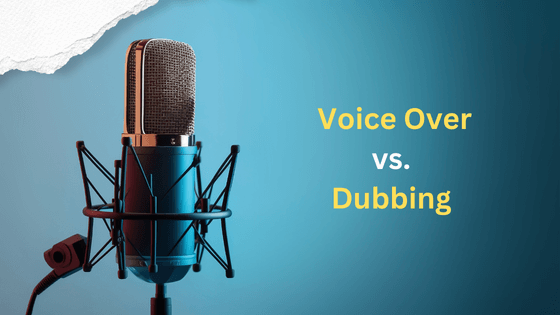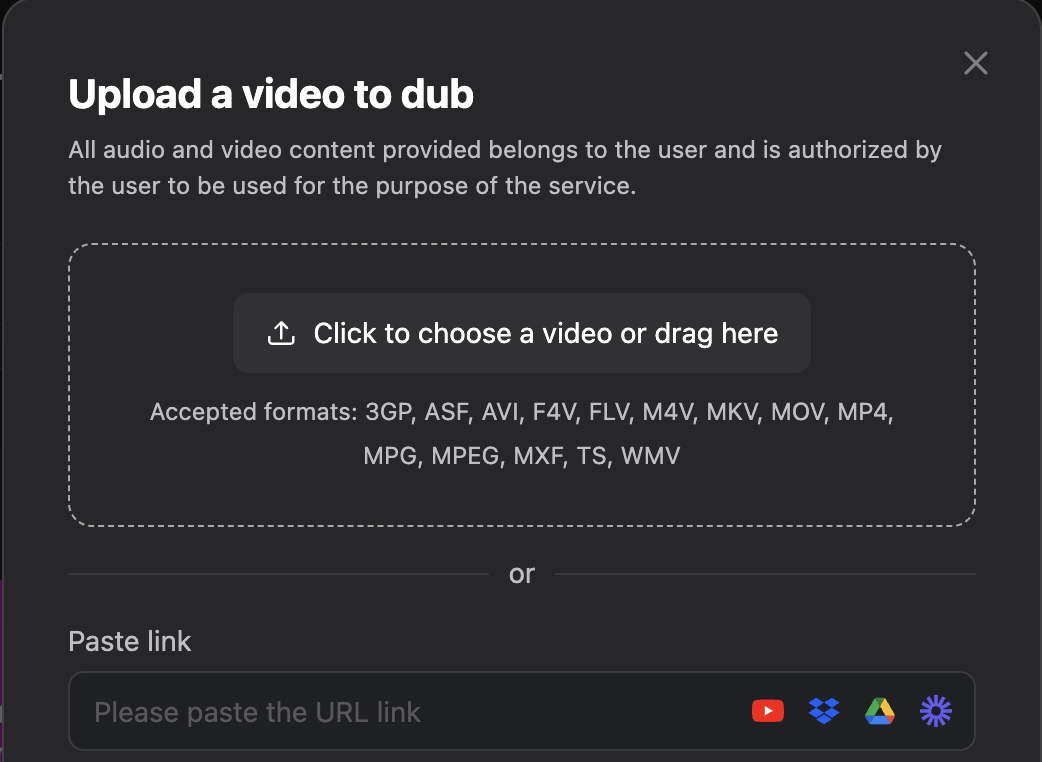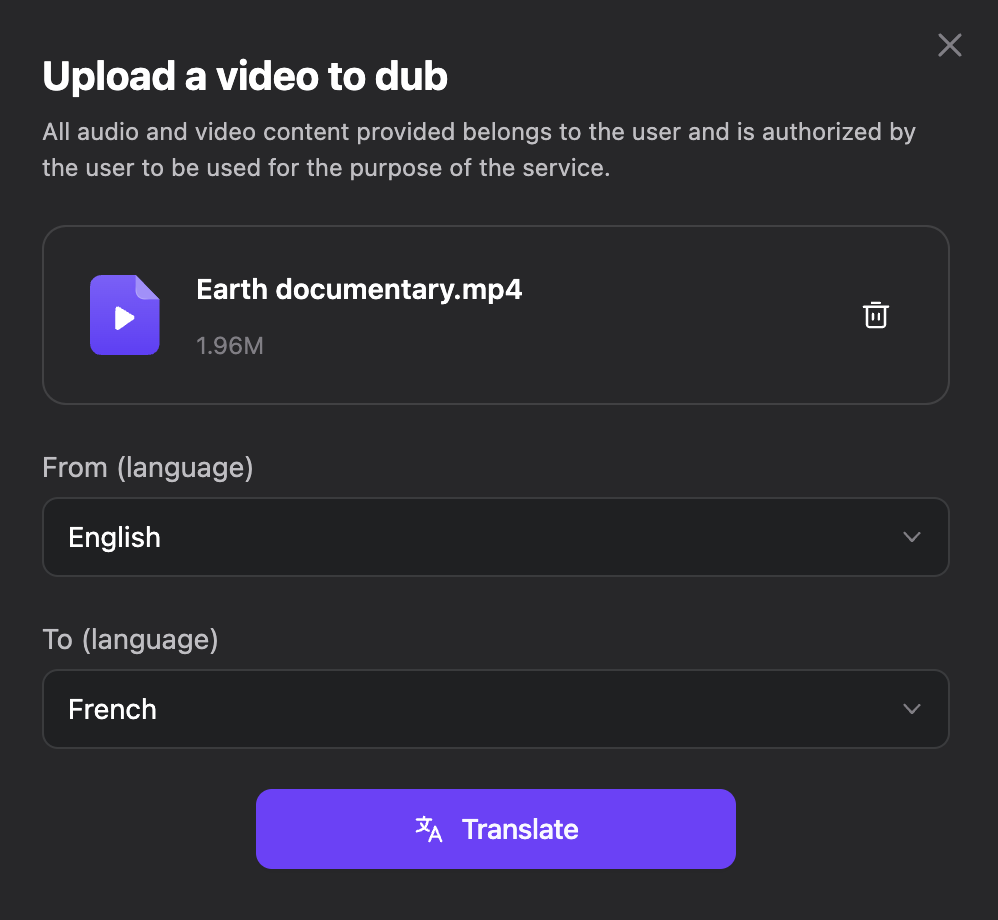
Voice Over vs. Dubbing: What’s The Difference?
Instantly translate your video into 15+ languages with Notta Showcase, reaching a global audience has never been easier.
For content creators, reaching a global audience often involves localizing video content, and two prevalent methods for achieving this are voice-over and dubbing.
Both techniques are fundamental in making content accessible and engaging to non-native speakers, and the terms are even used interchangeably, leaving people confused.
If you are one of them, be at ease, as this guide will dive into the key differences between voice-over and dubbing, exploring their applications, costs, and more to help you make an informed choice for translating your content.
Let’s first start with their definitions.
What is dubbing?
Dubbing is the process of replacing the original audio track in a video with a translated version in a different language. This requires that the original characters' expression, tone, style, emotion, and pacing are matched for a seamless viewing experience.
Dubbing is carried out by professional voice actors who transcreate the original script. The major aim is to make foreign content appear native to the target audience.
What is voice over?
A voice over is an explanatory voice added to an already filmed video to provide more context for the onscreen content. Unlike dubbing, voice over is recorded over the original sound, which means that the original audio is still audible in the background.
This method of video localization is more informative and narrative in nature, making it suitable for explanatory purposes.
Differences between voice over and dubbing
We’ll explain their differences in several aspects, so you have a better understanding.
Dubbing is more complex and costly
Dubbing is generally more complex than voice-over as it requires high-level skill and technical ability. The voice actors need to be able to mimic the style and intonation of the original actors and match their lip movements, creating an immersive experience.
Voice over, on the other hand, does not require precise synchronization with the video. Sometimes, voiceovers are recorded away from the visuals and added over the original dialogue.
Dubbing triggers emotions, while voice-over doesn’t
Maintaining emotional nuances is one of the significant requirements in dubbing. It basically involves re-acting the script in the translated language to ensure it sounds natural. The objective is for the viewer to absorb the message in a wholesome and rich way.
Voice over focuses more on the accuracy of the translation and getting the on-screen information across. So, it is usually bland and devoid of emotions.
Dubbing is more culturally adapted
During the translation and adaptation stage of dubbing, special attention is given to adapting the translated script to meet the cultural preferences of the target audience. This might require changing idiomatic expressions, cultural references, and how some words are used.
With voice over, there is little to no consideration for cultural adaptation, as the focus is mainly on retaining the originality of the information. For example, you wouldn't imagine trying to culturally adapt a voice over done over a news or interview with Elon Musk. All you need is to translate the information for the target audience.
Voice over is noticeable, but dubbing is not
Voiceover translation is usually noticeable, as the original audio is intentionally kept audible to let viewers know that the voice is translated. The aim is to preserve the originality of the information as we often see in Television interviews.
Dubbing, on the other hand, aims to be as unnoticeable as possible. A perfectly dubbed video matches the lip movement, pacing, and timing of the original, making it look like it was initially produced in the translated language.
The preferred regions are different
People in regions like Russia, Ukraine, and Poland usually prefer voice over. So, if you are targeting new markets in this area, consider using voice over.
Conversely, Dubbing is the go-to localization method for people in countries like Germany, Italy, India, Spain, and France.
How to choose between dubbing and voice over
Before choosing dubbing or voice over, you need to consider some essential factors that will make your content have the desired impact.
You should choose dubbing if:
You need to deliver an authentic viewing experience: With lip-syncing and completely re-acting the script in the target language, dubbing ensures the language change is not noticeable to audiences, giving a seamless viewing experience.
You need cultural adaptation: Dubbing emphasizes adapting content to the target audience, which can require rewriting some parts of the original script.
You should choose voice over if:
You need to ensure the accuracy of translation: In dubbing, it might be difficult to translate word-for-word due to differences in word length when lip-sync is needed. This problem does not exist with voice-over, however, as you can ensure 100 percent translation accuracy.
You need to tell a story: If your content is about narration and storytelling, you don't need to spend much time dubbing. Voice over should do the job.
Elevate your dubbing efficiency with AI
It is safe to say dubbing is the most encompassing localization method, thanks to its applicability to different types of content. However, many people neglect it because of the cost, complexity, and time it takes.
Fortunately, these downsides have been negated by AI, with the advent of excellent AI dubbing tools that translate your videos in minutes at a relatively low cost. One such tool is the impressive Notta Showcase.
This software can effortlessly translate your videos into 15 other languages, including English, Spanish, Portuguese, and French. It also boasts a voice clone feature that maintains the originality of the speaker's voice, making the dubbed version of your video sound natural and authentic.
To effectively dub your video using Notta Showcase, follow the detailed steps below:
Step 1: Upload your video
Launch Notta Showcase and click the ‘Upload Files’ button in the upper left corner of the dashboard. Now, upload the video you want to dub from your device.

Step 2: Start translation
Select the source and target language and click the ‘Translate’ button to begin the dubbing process.

Step 3: Review and export your video
Finally, review the dubbed video to ensure it meets the desired specifications and export it conveniently.
Wrapping Up
Voice over and dubbing can be easily confused for one another, as the two concepts are often used interchangeably. However, they are distinctively different, as we have explained in this guide.
In all, voice-over focuses on translation accuracy and is noticeable to users, while dubbing aims to make the translation as unnoticeable as possible, making the dubbed video look real and original. Now, you must know how to choose the method that works best for you.
Learn More